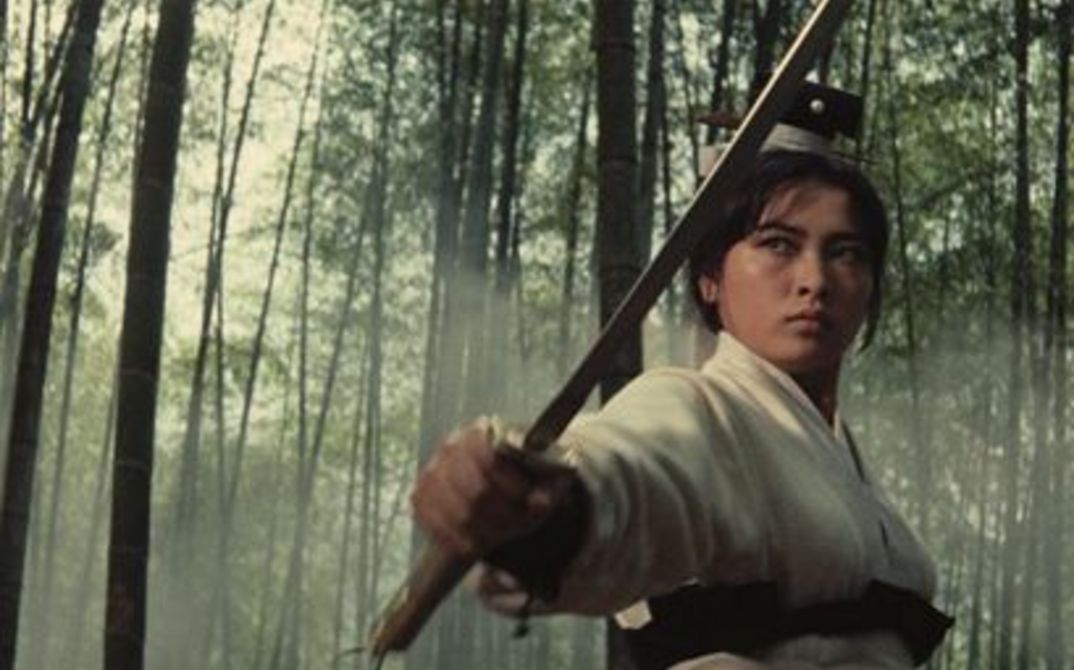People arranged in space, the orchestration of objects, even compositions of facial expressions or gestures – sequences of movements that merge into cinematic choreographies appear in a wide range of forms and in nearly all genres. Even if dancing doesn’t always take place directly, they always contain some element of dance: choreographies in film create rhythm, abstraction, stylization, visual spaces, and webs of relationships, reflect stasis and movement, forge an often physical cinema.
ISKINDEREYA KAMAN WA KAMAN (Alexandria Again and Forever, Youssef Chahine, Egypt/France 1989, 1. & 3.10.) Since his preferred actor no longer wants to work with him, director Yehia (the alter-ego of director Youssef Chahine and played by him) is in crisis. He rethinks his career thus far, remembers winning the Silver Bear at the Berlinale in 1979 – a scene which ends in a musical scene on the streets of a wintry Berlin by night – and declares solidarity with those striking in the Egyptian film industry.
LONESOME (Paul Fejos, USA 1928, 2.10., with a live piano accompaniment by Eunice Martins) Telephonist Mary and worker Jim each begin their day alone: getting up in a small rented room, dressing, breakfast, the journey to work in the overfilled subway, finally work at the factory – every movement has become a ritual after having been repeated a thousand times over. At midday, they then head out to Coney Island. It is there that they meet, freed from the compulsions of day-to-day life.
FOOTLIGHT PARADE (Lloyd Bacon, USA 1933, 11. & 13.10.) Musical producer Chester Kent (James Cagney) sees his business under threat by the arrival of sound film. Short prologues that run in cinemas before the main feature and are supposed to tour through the whole country bring his hoped-for salvation – but now must be rehearsed at breakneck speed, between the disturbances caused by the censors and love troubles within the company. With their eccentric sets, geometrically patterned and ordered dancers, and extravagant costumes, the lavish choreographed dance numbers by Busby Berkely form the highpoint of the film.
TIMBUKTU (Abderrahmane Sissako, Mauritania/France 2014, 10. & 15.10.) A group of youths in colorful, fluttering jerseys runs around a sandy sports field. The seemingly cheerful scene quickly turns into its opposite as it becomes clear that the kids are playing soccer without a ball. The scene functions as both a marking of lunacy—Islamic groups have occupied the mythical city of Timbuktu and forbidden the playing of soccer, among other things—and as a poetic choreography of rebellion, of resistance, of the imagination. In other parts of the city, similar small gestures of resistance on the part of the populace agitate against the rebels’ strict fundamentalist rules.
HSIA NU/A TOUCH OF ZEN (King Hu, Taiwan 1971, 12. & 14.10.) This formative masterpiece of the wuxia genre tells the story of the mysterious Yang, who is hiding out in a remote house that is allegedly haunted. On the run from her father’s murderers who want to kill the whole family, she meets the young scholar Gu, who is drawn into her battle for survival. With breathtakingly choreographed fight scenes and virtuoso camerawork, the battle between good and evil gradually gives way to a reflection on the nature and purpose of violence.
DIE KLAGE DER KAISERIN (Pina Bausch, France 1989, 16. & 21.10.) In her first work for cinema, the legendary founder and decade-long head, dancer and choreographer of the "Tanztheater Wuppertal" Pina Bausch transposes her working methods into the cinematic medium and choreographs not just people and animals in landscapes and interiors but also various snapshots to form a collage of "fairy tale images, like in a picture book" (P.B.). Accompanied by pieces of music from different regions and time periods, a kaleidoscopic structure of different moods and atmospheres is created, a lament at once uncanny and funny, narrated by bodies or body parts, gestures, facial movements and movements.
ADIEU, PLANCHER DES VACHES! (Marabus!, Otar Iosseliani, F/I/CH 1999, 17. & 23.10.) “If one is rich, one thinks the poor are happy, without a care and surrounded by real friends. If one is poor, one imagines the life of the rich as wonderful." (Otar Iosseliani) Nicolas is 19 and trying to escape the golden cage of his rich family. He sneaks away from his glamorous country home to meet tramps and young petty criminals in Paris. The graceful visual language and the choreographed movements are significant for all Otar Iosseliani’s films. Heightened by the preferred use of wide shots and the few cuts, one gets the impression of permanent circulation; everything flows.
MARTHA (Rainer Werner Fassbinder, West Germany 1974, 18. & 24.10.) Michael Ballhaus's complex camera choreography in Fassbinder's unfussy drama has been much discussed; the high point of its precision and compression is undoubtedly a 360-degree tracking shot that occurs relatively early in the film. The ominous sequence shot depicts the first encounter between the protagonists—Martha, who has been taught to be dependent and obedient, and the inscrutable Helmut; not long afterward, they will marry. A dizzying arc shot is the crystallization of a sadistic merry-go-round.
KUNDSKABENS TRÆ (Tree of Knowledge, Nils Malmros, Denmark 1981, 19. & 29.10.) Vignettes from the life of a handful of school children on the threshold between childhood and teenagerdom shot over two years "which gradually fan out into an entire social cosmos of longing and rejection, power and isolation" (Florian Keller). Malmros sounds out the hardships of these adolescents with sensitivity, tracking how their realm of experience shifts between jealousy and heartache. The daily shifts in the group dynamic unfold as a smart choreography, which decides upon who belongs and who is to be excluded. (al/ma/hjf)



